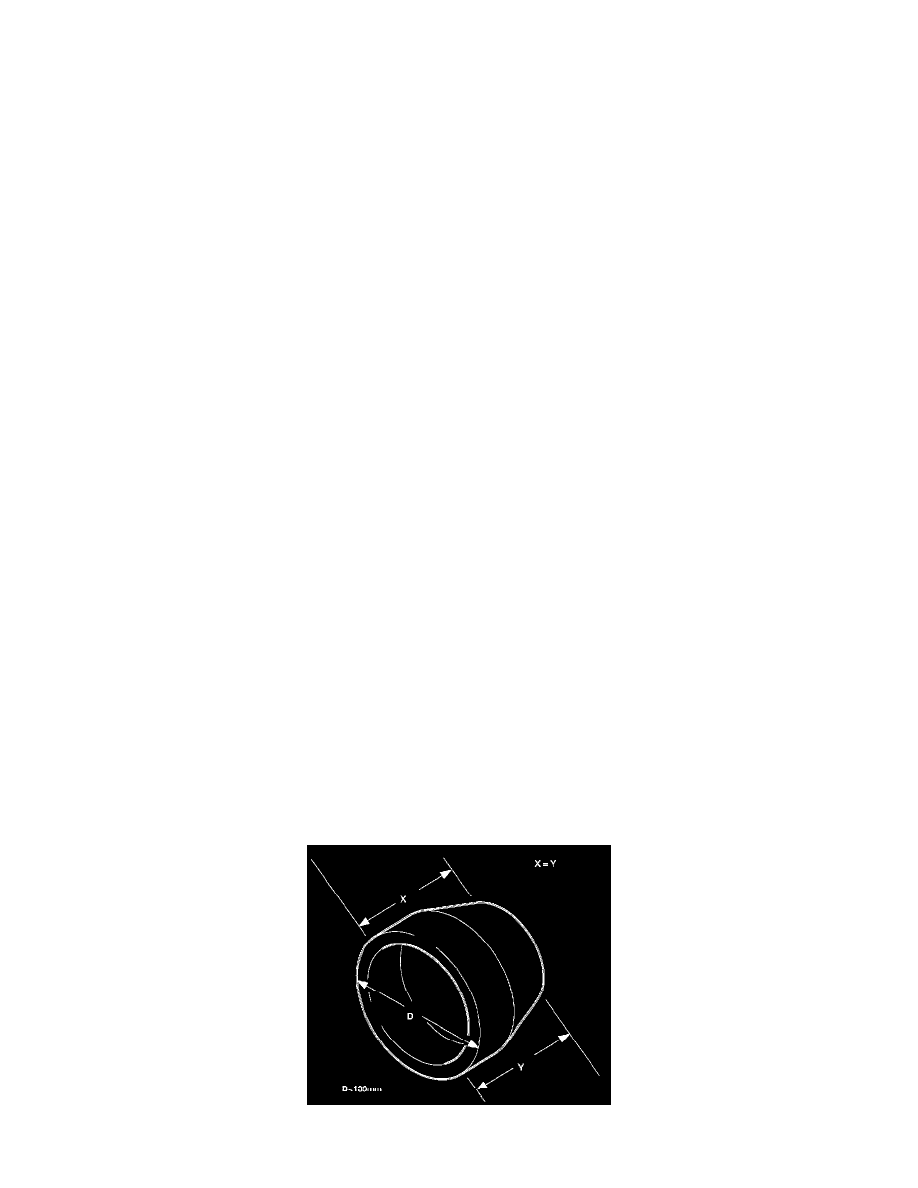SW L4-1.9L DOHC VIN 7 (1993)

12.
Zero the dial indicator.
13.
Rotate the brake drum one complete revolution and observe total indicated runout (TIR). Maximum TIR (combined brake drum and hub): 0.28
mm (0.011 in.)
^
If the combined brake drum and hub radial runout does not exceed 0.28 mm (0.011 in.), brake drum and hub are within specification and no
repair is required. Refer to brake pulsation diagnosis in the appropriate year service manual.
^
If the combined brake drum and hub radial runout exceeds 0.28 mm (0.011 in.), proceed to step 14.
14.
Remove brake drum and install on a brake lathe.
15.
Fasten a dial indicator to the lathe.
16.
Position dial indicator tip against brake drum shoe surface.
17.
Rotate brake drum to the lowest reading.
18.
Zero the dial indicator.
19.
Rotate the brake drum one complete revolution and observe total indicated runout. Maximum TIR (brake drum): 0.15 mm (0.006 in.)
^
If the brake drum radial runout exceeds 0.15 mm (0.006 in.), refinish brake drum as long as refinishing does not exceed brake drum maximum
diameter of 200.6 mm (7.90 in.) after turning.
^
If the brake drum exceeds maximum diameter, replace the brake drum.
20.
Subtract total indicated runout (TIR) measurement obtained in step 19 (brake drum runout) from TIR measurement obtained in step 7 (combined
brake drum and hub runout). The difference between these two readings represents hub runout.
Combined Drum and Hub Runout - Drum Runout = Total Hub Runout Maximum TIR (hub): 0.13 mm (0.005 in.)
If the hub runout exceeds 0.13 mm (0.005 in.), replace the hub and bearing assembly.
21.
Install road wheels. Make sure to torque wheel nuts, in a crisscross tightening sequence, with a hand-held torque wrench.
Tighten
Tighten wheel nuts to 140 N.m (103 ft-lbs).
Recommended Procedure for Machining Brake Rotors
A brake rotor is a precision machined part. It must be properly machined to provide proper service.
1.
All rust and corrosion must be removed from the mounting surfaces of the brake rotor. Use a wire brush or a wire wheel and a drill to remove all
corrosion and scale from the mounting surfaces of the brake rotor.
2.
Make sure the correct "bell clamps" are used to mount the brake rotor on the brake lathe. Some bell clamps may appear to fit flush inside the brake
